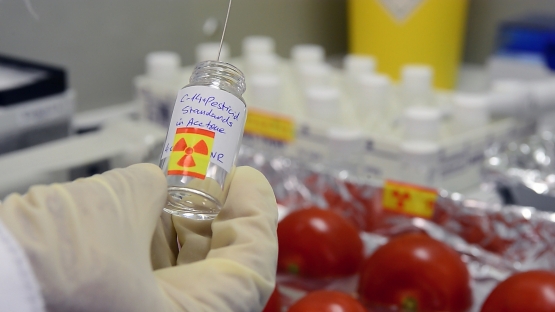In recent times, food safety has been in the spotlight with reported outbreaks of serious food contamination and fraud, such as horse meat found in beef burgers, melamine in milk powder, and inferior rice, honey, whisky and fruit juice substituted for the genuine product. Some cases have also highlighted hazardous food-borne diseases that can endanger human health. Food safety relates to the production, handling, preparation, and storage and quality of food in ways that prevent foodborne illness, which includes tracking the food chain from its origins until it reaches the consumer.
Contamination hazards in the agricultural food chain can stem from a range of sources including residues of agrochemicals, and natural toxins. The economic impact of food contamination and fraud is significant, and food fraud alone is estimated to cost billions of US dollars each year, affecting up 10 percent of food products sold.
Today, in commemorating this year’s World Health Day theme on food safety, the IAEA is highlighting how nuclear techniques can help control food-borne diseases and can also be used to detect, monitor and track contaminants in foods. These tools can contribute to Member States’ efforts to maintain food safety and to ensure the continued production of high-quality food.
Working together
The IAEA works in partnership with the Food and Agriculture Organization (FAO) in a joint programme that focuses on food and environmental protection. With a global reach, one of the ways this joint programme works to promote food safety is through forging sustainable networks of laboratories to improve food safety and food control systems. Networks like these can leverage the impact of national and regional food control laboratories in a world where food trade is becoming increasingly complex and globalized, and where the supply chain from ‘farm to plate’ often transcends national boundaries.
Control of food quality and safety
Food safety is key to processing and exporting foodstuffs, while stringent quality and safety requirements are needed in order to protect public health. Modern applications of nuclear screening techniques, such as radio assay, can detect food contamination in the lab and in the field. Additionally, the use of isotope ratio measurements can combat adulteration and provide a unique means of tracing agricultural food products back to their origin.
In this regard, the Joint FAO/IAEA Food and Environmental Protection Laboratory based in Austria provides technical services and laboratory training to IAEA Member States with particular emphasis on chemical residue analysis and also food traceability.
The IAEA has also numerous projects in the field. For example, in Botswana an IAEA technical cooperation project helped the country to use nuclear techniques to monitor veterinary drug residues in meat, which was strategically important for the country to address a six month suspension of beef exports to the European Union in 2011 that was estimated to cost at least 47 million euro. The project resulted in 14 new analytical methods being validated for official controls and laboratory accreditation for 12 analytical techniques. Not only did the function of the laboratory increase, but the improvements also meant that some meat tests no longer needed to be subcontracted to laboratories in Europe, saving money for the government.
Food Irradiation
Interest in the use of irradiation technology for food processing, for reasons of food safety and quality, is also growing. Food irradiation is a regulated technology that employs gamma radiation, X-rays, or high energy electron beams to control spoilage and eliminate food-borne pathogens and post-harvest pests. The Joint FAO/IAEA programme supports and develops this technology to maintain food quality and ensure food safety.
International food safety standards
With a direct link to the Joint FAO/World Health Organization Codex Alimentarius Commission and its international food safety standards, IAEA activities in the food safety area are supporting international standards on food irradiation and the application of these standards, as well as strengthening the standards for use of nuclear and related analytical technologies for verifying food authenticity and measuring residues of agrochemicals such as pesticides and veterinary drugs in food.
The FAO/IAEA partnership is an important example of a unique, interagency cooperation — with a fusion of complementary mandates, common targets, joint programming, co-funding and coordinated management all contributing to the safety of the global food industry.




